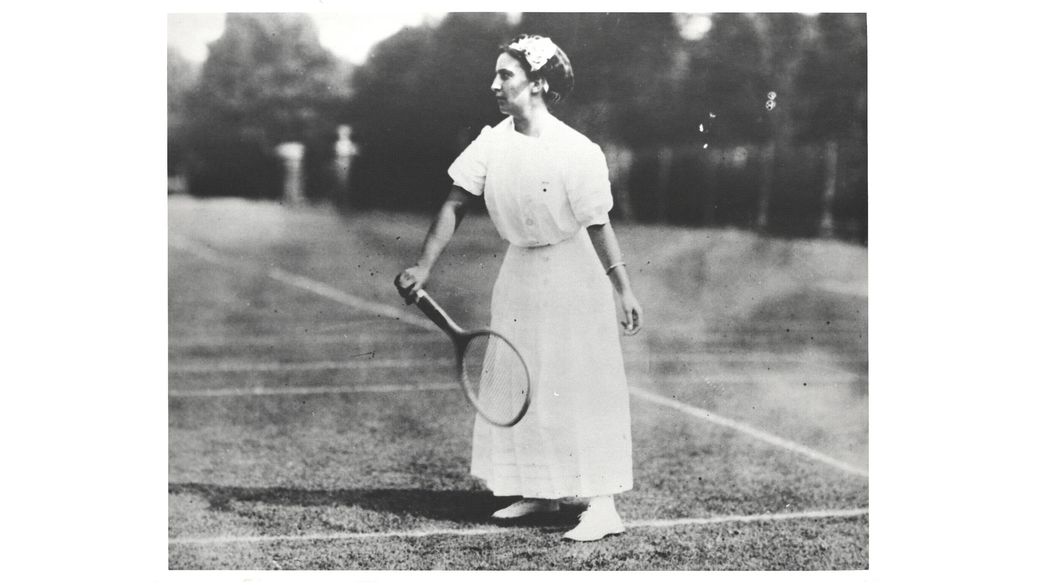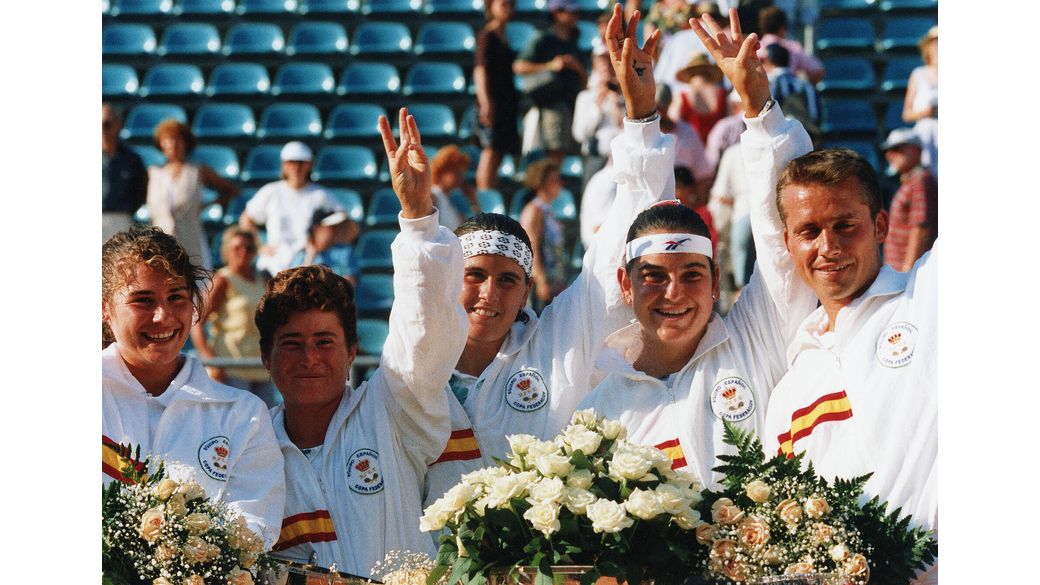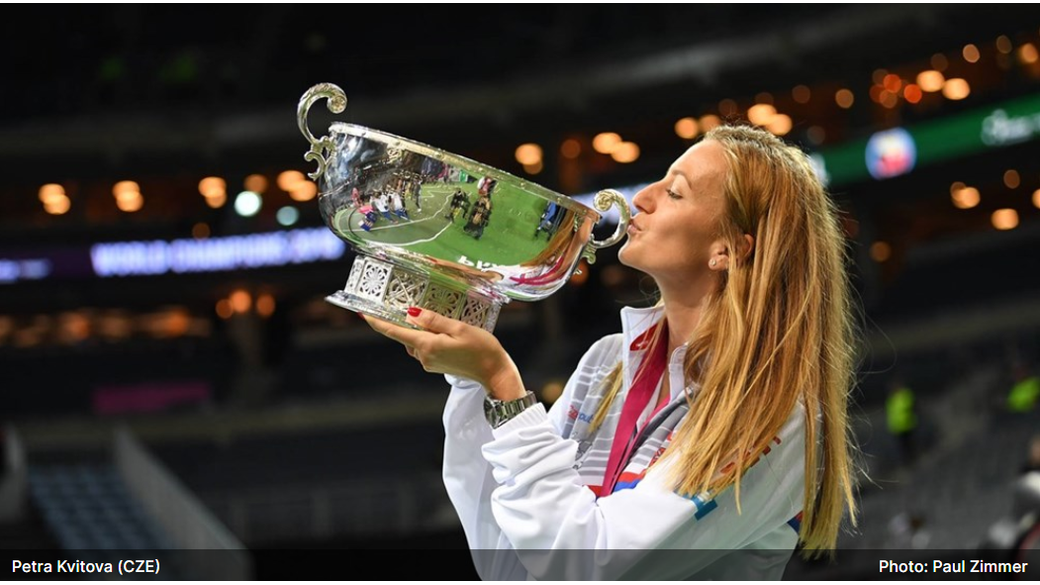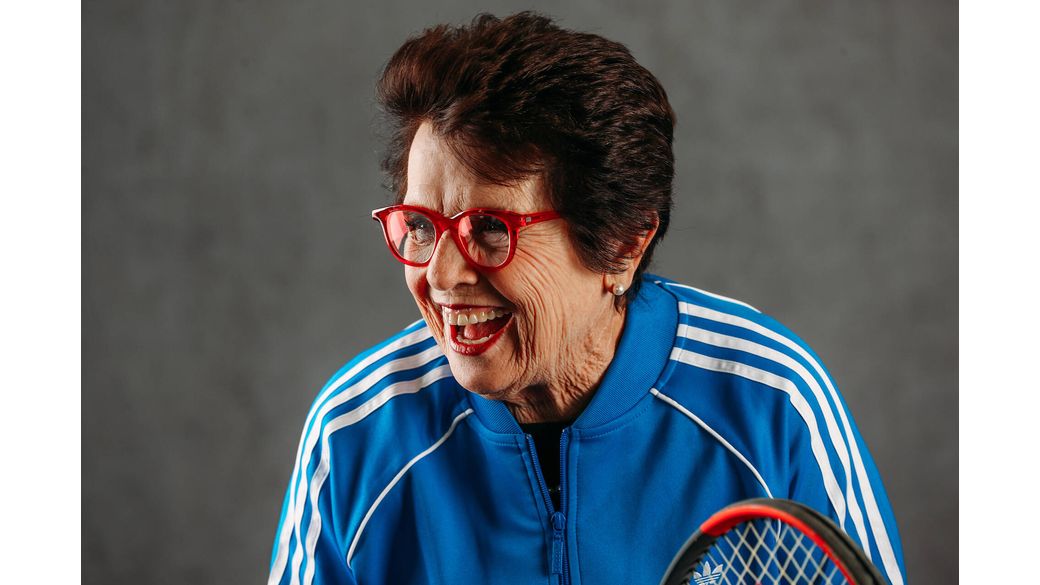History
The Billie Jean King Cup – formerly known as Federation Cup (1963-1995) and Fed Cup (1995-2020) – was launched in 1963 to celebrate the 50th anniversary of the International Tennis Federation (ITF).
It is now the world’s largest annual international team competition in women’s sport, with a record 132 nations competing in 2023.
__________________________________________________________________________________________________________________________________________________________
Concept
The idea for the competition can be traced back to 1919, when Mrs Hazel Hotchkiss Wightman came up with the concept for a women's team event.
When this was rejected, she instead presented a trophy in 1923 for an annual contest between USA and Great Britain, who were at that time the strongest tennis-playing nations. Mrs Nell Hopman, wife of the legendary Australian Davis Cup captain Harry Hopman, later took up Wightman's original idea.
In 1962, when a British resident of USA, Mary Hardwick Hare, presented a dossier proving that support for such an event was overwhelming, the ITF was persuaded to organise a team championship played over one week in a different venue each year. It had taken 40 years for Wightman’s concept of a women’s version of Davis Cup to become a reality.
The ITF, the world governing body of tennis, launched the Federation Cup in 1963 to celebrate the organisation’s 50th anniversary. Open to all nations, not just USA and Great Britain, the much awaited competition became a resounding success.

Early years
Played over one week in a different venue each year, the competition attracted teams from 16 countries and was supported by the top players right from the start.
The inaugural event was held at Queen’s Club, London, and the first final between Australia and USA set the tone with Grand Slam champions Darlene Hard, Billie Jean King, Margaret Court and Lesley Turner all proudly representing their country on court.
The Americans emerged champions and have since put their mark on the competition, collecting a record 18 titles over the years.
Competition expands
That first Federation Cup had attracted entries from 16 nations, a respectable number considering there was no prize money and teams had to meet their own expenses.
Sponsorship from the likes of Colgate Group and NEC later enabled this number to expand dramatically, while the support of today’s title sponsor BNP Paribas continues to promote growth for the Billie Jean King Cup.
By 1994, 73 nations competed and the host nation of a Federation Cup week was now required to build a special tennis complex, giving rise to what became known as the Federation Cup Legacy.
In addition to the kudos of showcasing the premier team competition in women’s tennis, nations viewed their involvement as providing an unprecedented opportunity for their national game to develop.

Evolution of the format
The rise in entries led to the creation of regional qualifying competitions in 1992 and, subsequently in 1995, Federation Cup adopted a new format and shortened its name to Fed Cup.
The format was changed in 1995 so that women could play for their country on home soil, emulating Davis Cup.
The competition's format has been adjusted several times since 1995. The current format was introduced in 2020 and saw the creation of a Billie Jean King Cup Finals event, consisting of 12 teams and played in one location over six days for the right to be crowned champion.
Teams qualify for the Finals via the Billie Jean King Cup Qualifiers (which are played on a home-and-away basis), with the exception of the previous year's finalists, the hosts, and a wild card nation, who each gain automatic entry.
The remaining nations are divided into Groups (I-III) of three regions: Americas, Asia/Oceania and Europe/Africa. Promotion and relegation are played for each year, while nations in the Billie Jean King Cup Finals compete to be crowned champion.

Rebranding to the Billie Jean King Cup
The competition was rebranded in 2020 to align with a global icon who has dedicated her life to fighting injustice, inequality and discrimination in all forms.
The competition was rebranded in 2020 to align with a global icon who has dedicated her life to fighting injustice, inequality and discrimination in all forms.
A champion on the court and a pioneer off it, King’s values and beliefs epitomise the ethos of a tournament that has evolved to become the largest team competition in women’s sport and now boasts the biggest annual prize fund in women’s team sports - equivalent to that offered to men playing Davis Cup.
The bold rebranding of the competition not only recognises Billie Jean King’s achievements in winning the tournament a combined 10 times – as either a player or a captain - it also ensures she continues to be a visible role model for generations to come.

Tennis greats
The list of players who have competed in the competition over the years is impressive to say the least. Many of the game’s all-time greats, along with the current crop of talents, have featured in the competition throughout its history.
Along with King, players such as Margaret Court, Chris Evert, Virginia Wade, Martina Navratilova, Steffi Graf, Arantxa Sanchez-Vicario, Conchita Martinez and Martina Hingis all enjoyed significant success in the competition.
More recently, Venus and Serena Williams, Kim Clijsters, Justine Henin, Amelie Mauresmo, Svetlana Kuznetsova, Francesca Schiavone, Petra Kvitova and Sloane Stephens have all lifted the trophy.
These players are all the proof, if any was needed, that Wightman, Hare and their allies were right… women's tennis demands a truly international stage for players to represent their country, which is what the Billie Jean King Cup continues to provide.
Tennis is a sport that is inherently individualistic, but the Billie Jean King Cup, like Davis Cup, offers players the chance to play for their country within a tightly knit team. It’s a challenge that most players rise to. The ITF is proud that tennis is one of the few – but growing – number of sports where women enjoy equal-billing at the highest level.



